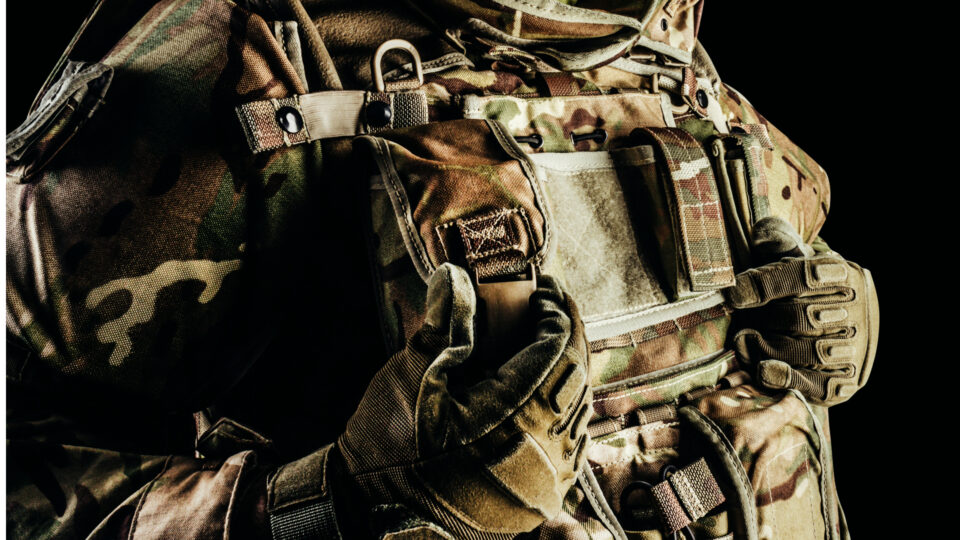Safety on mission is the primary priority for law enforcement officers. And the edge between safety and potential injury is often the “edge” between Level IIIA and Level III body armor. In this article we try to highlight the differences between NIJ Level IIIA body armor and NIJ Level III body armor from a practical point of view.
In the U.S. the main governing body for ballistic protection is the National Institute of Justice. The NIJ develops ballistic armor standards and methods of testing armor against various types of ballistic threats. Overall, there are 5 levels of threats based on bullet muzzle velocity and mass. Here, we will discuss Level IIIA and Level III body armor.
Technical specifications
According to the National Institute of Justice, new and unworn Level IIIA body armor is required to stop the following ammunition types:
NIJ Level IIIA body armor
| Ammunition type | Bullet mass | Bullet velocity |
| .357 Sig FMJ Flat Nose | 8.1 grams or 125 grain | 1,470 ft/per second |
| .44 Magnum Semi Jacketed Hollow Point (SJHP) | 15.6 grams or 240 grain | 1,430 ft/per second |
For conditioned body armor the specifications are lower. We’ll explain what “conditioned” means below. Put this simply, conditioned armor specifications are closer to real life situations.
| Ammunition type | Bullet mass | Bullet velocity |
| .357 Sig FMJ Flat Nose | 8.1 grams or 125 grain | 1,410 ft/per second |
| .44 Magnum Semi Jacketed Hollow Point (SJHP) | 15.6 grams or 240 grain | 1,340 ft/per second |
NIJ Level III body armor
Level III armor plates can be flexible or hard. Hard plates are always tested in a conditioned state, while flexible armor plates are tested both in “as new” and conditioned states. The standard values, though, are the same:
| Ammunition type | Bullet mass | Bullet velocity |
| 7.62mm FMJ | 9.6 grams or 147 grain | 2,780 ft/s |
Just by looking at these numbers you can already see the difference: Level III armor plates must defeat bullets with much higher muzzle velocity. These are rifle shots from AR-15, for example. Also, Level III is efficient against 55 gr bullets such as 5.56×45, but more weighty ammunition types can penetrate it.
How armor plates are tested
What is “as new” and “conditioned” body armor?
Law enforcement officers draw their duty in a wide range of conditions: warm and cold, arid and humid etc. And the armor they wear must guarantee protection in any conditions. That is why the NIJ conducts tests for new and unworn body armor plates and conditioned body armor plates.
Conditioned armor is intended to emulate various environmental conditions through pretest conditioning. Pretest conditioning protocols apply to Level IIA, Level II, Level IIIA soft armor and flexible Level III and Level IV armor. Specifically, the NIJ performs the following conditioning procedures:
- Air temperature. The test temperature is 65 ºC (149 ºF).
- Humidity. The test relative humidity is 80%.
- Tumbling. The tested armor plate is put into a rotating drum to simulate everyday mechanical load. Overall, 72000 complete rotations at 5 rpm must be conducted on average.
These tests are conducted for 10 days overall.
Why this is important
Knowing about conditioned body armor specifications is vital, because this directly takes effect on how you select your body armor set. In many southern states such as Florida and Alabama relative humidity can easily exceed 80% in the summer. High temperatures are also common there. Hence, the efficiency of your protection may drop significantly.
In order to remain hale and sound, you should take the climate of the area of your primary duty when you make a choice between Level IIIA and Level III armor plates.
What is the LEOKA program?
The Law Enforcement Officers, Killed and Assaulted program is a national database that gathers data on how policemen and law enforcement officers interact with the public: what casualties they take, how many get injured or killed on the duty. Also, it gathers statistics on the weapon usage, and rates various threats by geography and the type of weapon used. Last, but not least, the program offers a number of safety guidelines developed based on gathered statistics.
While looking through these tragedies may seem cynical or grim, but in the end the program helps law enforcement officers to pick the best body armor and make better decisions in dangerous situations.
Why this is important
According to LEOKA sources such as the FBI, there is territorial inequality when it comes to the armed crimes and the type of injuries law enforcement officers get. Southern and western states are more dangerous to policemen as well as big cities like Los Angeles or New York. Also, in regions with higher crime rates LEO are more likely not only to be involved in gunfire with criminals, but also to face rifles and shotguns instead of handguns. Taking this grim statistic into account is literally vital, because in many states even highway patrol officers should prefer Level III armor over lighter Level IIIA.
What about In-Conjunction With armor plates?
They are tested too. But for ICW, the test must be obligatory performed against both plates (two flexible armor plates or one flexible plate with a hard armor insert) together. So, the entire testing procedure in the case of ICW looks as follows:
- First, each armor plate is tested individually to make sure it matches the declared body armor Level.
- Then, plates (or a plate and an insert) are tested together as a whole to see if the combination can match the NIJ Level III/IV specifications.
Importantly, if the armor plate you see in an online store says something like “NIJ Level III ICW” this means you must use this plate in conjunction with a hard armor insert to achieve this protection rating. Otherwise, the plate does NOT defeat 7.62 rounds as the Level III normally implies.
Who should use Level IIIA and Level III armor plates
In conclusion, practical differences between Level IIIA and Level III body armor is not only in their protective capabilities, but also in the way you choose one or another type for your everyday duty.
Level IIIA
As we said above, plates rated by the NIJ standard as Level IIIA can stop all handgun bullets (well, with some exceptions such as Luger 9mm, which require Level III) up to .44 Magnum. Level IIIA is lightweight and easily concealable, so it is the obvious choice for patrolmen and law enforcement officers under cover.
However, you should take into account both natural climate and criminal climate in the region before stopping on Level IIIA. In fact, in warmer climates this armor plate type may not give enough protection against Magnum.
Level IIIA is advisable for:
- Patrol officers
- Highway patrols
- Detectives
- Security guards
- Prison guards
- Officers under cover
- Negotiators
Level III
Level III armor is considered to pose the optimal balance between protective capabilities and comfort of the wearer. The armor stops everything Level IIIa can defeat, and in addition also defeats 7.62×39 and 7.62×51 ammunition types as long as their muzzle velocity is below 2,780 ft/s and the weight of the bullet is under 9.6 g. Plus, it can stop non-military grade 5.56 rounds.
Level III body armor outperforms the protective capabilities of Level IIIA, but is harder to conceal. It is recommended for use in situations where rifle fire is expected or when conditioned Level IIIa is just not enough.
Level III armor plates are advisable for:
- Police officers (especially in warmer regions)
- Safeguards
- FBI, NSA or ATF operatives
- SWAT
Conclusion
Since the majority of officers became victims of handgun fire (nearly 58%), Level IIIA body armor plates seem the most reasonable choice when it comes to police officers and law enforcement forces. Rifles and shotguns amount to nearly 20% of overall LEO casualties. To address such threats Level III armor plates are required.




